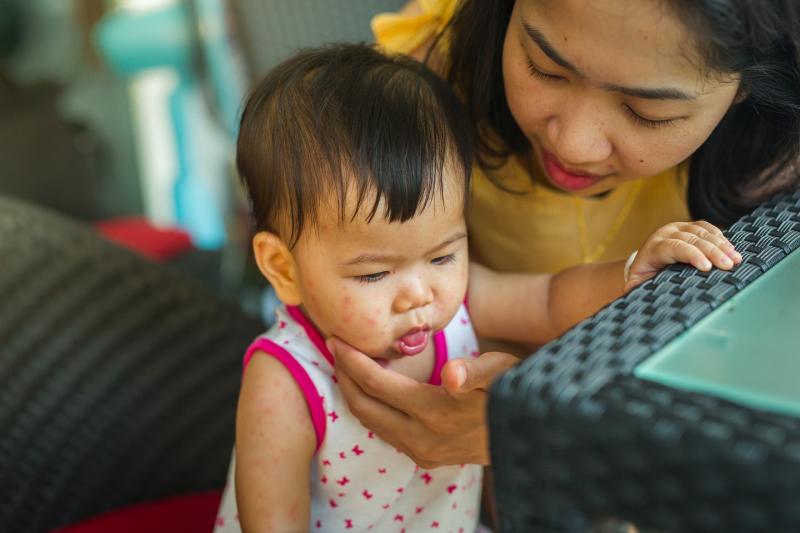
A significant number of paediatric patients in Singapore who have been hospitalized for measles infection present with nonspecific symptoms at an early phase of illness, which makes it difficult to properly isolate all potential suspected measles patients in the emergency department (ED) setting despite strict isolation policies, according to a study.
“This calls for the importance of universal push for global vaccination to increase herd immunity to prevent measles infection,” the researchers said.
A total of 277 hospitalized patients with measles were included in this retrospective observational cohort study conducted from January 2010 to December 2016. Of the patients, 177 (63.9 percent) were not initially isolated at the ED triage and 92 (33.2 percent) were not admitted to isolation wards upon admission. [Pediatr Infect Dis J 2019;38:1204-1207]
A few patients (n=77; 27.1 percent) with microbiologically proven measles did not show any rashes at initial ED presentation. They were admitted earlier in their illness compared to those who had a rash at presentation (3.1 vs 4.8 days; p<0.001). Patients with rash were also younger, and most of them presented to the ED due to poor feeding.
Koplik’s spots are pathognomonic of measles but may be challenging to identify, according to the researchers, noting that these spots are only present for 3–4 days and appear 1–4 days prior to widespread rash. [J Infect Dis 2004;189(suppl 1):S4-S16]
Only 8.7 percent of patients in this study had koplik’s spots with excellent specificity and positive predictive value (100 percent for both) but poor sensitivity and negative predictive value (13.0 percent and 36.4 percent, respectively).
“It would be challenging, however, for ED triage staff to identify this classical clinical feature, especially for the younger patients who have yet to complete their MMR vaccination (<15–24 months of age in our local population),” the researchers said.
No large outbreak of measles infection occurred in the ED or inpatient setting despite the lack of initial isolation in 92 (33.2 percent) of the admitted patients, they noted. This could have been brought by strict cross-infection and hygiene practices, mandatory documented healthcare worker measles immunity status, and herd immunity.
“[I]ncomplete immunization is a key risk factor [for] acquiring measles infection with 99.6 percent of admitted patients having no prior or incomplete measles vaccination,” the researchers said. “This potentially places children <18 months of age at higher risk for measles infection despite the local high uptake in vaccination and strict vaccination policies.”
First dose of measles immunization in children by 2 years of age increased from 93.2-percent coverage in 2003 to 95.1-percent coverage in 2015, according to data from the Singapore Ministry of Health. However, second dose of measles vaccination covered only 89.5 percent in 2015, short of the World Health Organization target of 95-percent coverage. [https://www.moh.gov.sg/docs/librariesprovider5/resources-statistics/reports/special-featurecea58aaf14d24e759798142525eda9a2.pdf; https://www.moh.gov.sg/docs/librariesprovider5/resources-statistics/reports/childhood-immunisation.pdf; http://apps.who.int/iris/bitstream/10665/44855/1/9789241503396%5Feng.pdf]